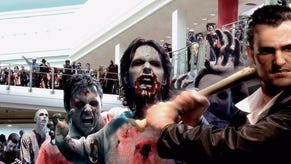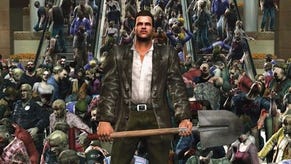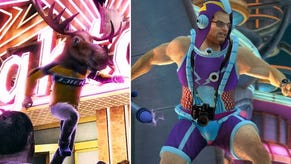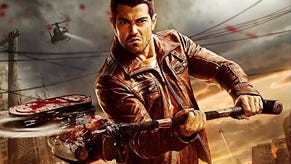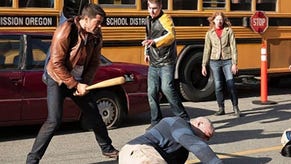Face-Off: Dead Rising 2
Undead reckoning.
| - | Xbox 360 | PlayStation 3 |
|---|---|---|
| Disc Size | 6.1GB | 5.91GB |
| Install | 6.1GB (optional) | 2840MB (mandatory) |
| Surround Support | Dolby Digital | Dolby Digital, 5.1LPCM, DTS |
And... relax. Following the controversial announcement of a reboot of Devil May Cry with a western developer at the helm, many were concerned that the Dead Rising sequel, developed in Canada, would lack the style and spirit of the Japanese original. Dead Rising 2 manages to honour that spirit while doing just enough to stand apart as a true sequel with its own distinct identity.
In the case of Dead Rising 2, a new studio also means a new engine: only recently, with the development of Marvel vs. Capcom 3, has the publisher allowed the use of its prized Framework MT technology outside of its Japanese HQ, so Blue Castle Games utilised its own technology for this release. The result is pretty impressive: the tech manages to process the requisite multitudes of zombies rather well and the draw distance and LOD transitions are fairly smooth with only minimal amounts of pop-up.
Disadvantages arrive in the form of sometimes-basic environments and lighting, along with some low-poly characters, but the overall effect is impressive. The question is, does the technical accomplishment translate over to the PS3 version of the game?
As is customary for these features, let's begin with the basic comparison assets. First up, there's a nice, meaty 720p comparison gallery to supplement the requisite head-to-head movie. Remember to use the full-screen button to get full 720p resolution.
Framebuffer measurements give us our first indication of the quality of this multi-platform project. The Xbox 360 version of Dead Rising 2 runs at native 720p resolution with the bonus addition of 2x multi-sampling anti-aliasing. The edge-smoothing is welcome: the engine concentrates on handling huge numbers of zombies with plenty of draw distance, so the actual levels of geometry in the environments are fairly basic. In short, there are plenty of large edges to smooth!
The PS3 version of the game shares the 2x MSAA of its 360 counterpart, but the unfortunate reality is that resolution has been compromised. There's little doubt that Dead Rising 2 on the Sony platform is running sub-HD, with 1024x576 appearing to be the game's native resolution. On the plus side, the quality of the upscaling to 720p isn't that bad, and while the edges still look a bit rough as a result, the overall impression is fine.
However, such a big resolution drop is clear evidence that Blue Castle had issues bringing the game to the PlayStation 3, and this is born out in other elements of the game's look and feel, most notably the overall performance level.
If there was one big issue with the original Dead Rising it was undoubtedly the pretty horrific screen-tear. Utilising the earliest example of Capcom's Framework MT engine, the scope of the game undoubtedly pushed the tech - as it was back then - to its limits. The sequel manages to resolve this unfortunate condition completely or not improve on it at all depending on which version you're playing.
Let's break out the performance analysis to find out more.
First up, there's some good news for Xbox 360 owners. Probably the most immediately apparent upgrade over the first game is that the developer is running with v-sync active, meaning that there is absolutely no screen-tear at all - so all tear graph indicators on the video refer to the PS3 version of the game.
For the most part, Dead Rising 2 on 360 does a fairly decent job of maintaining its capped 30FPS, but there are clearly some "gotchas" that can send performance plummeting. In particular, the outdoor scenes with the huge view distance seem to cause a problem, with consecutive frames running over-budget, resulting in occasional, jarring drops to a sustained, jerky 20FPS.
The usual solution developers employ is to disengage v-sync when running under 30FPS - image coherency will diminish, but response from the controls isn't impacted quite so much. Blue Castle Games appear to have chosen image quality over controller lag in these difficult scenes, and the drop in response is so pronounced that you can't help but wonder if this was the right decision to make.
The PS3 rendition of Dead Rising 2 appears to be using an entirely different approach to the rendering. V-sync is disengaged completely, as is the 30FPS frame-rate cap. What this means is screen-tear is an ever-present element of the image, even when the game is exceeding 30FPS.
Quite why frame-rate has been completely unlocked in the first place is something of a mystery, as it actually introduces more tearing with no appreciable increase in controller response and only very minimal increases in the amount of full frames being output from the console. Just about the only advantages it has over the 360's solution is that those zombie-packed outdoor scenes that occasionally cause the Microsoft console to chug operate with a higher frame-rate on PS3.

